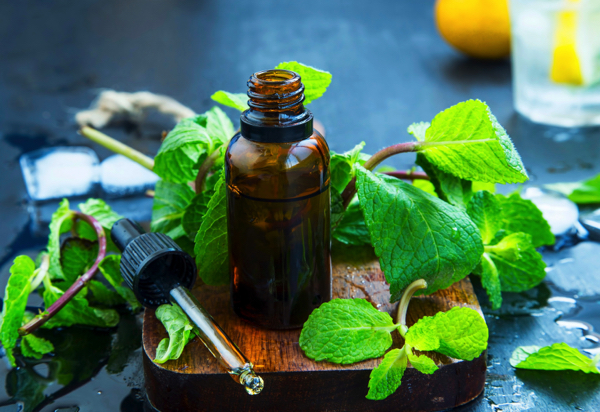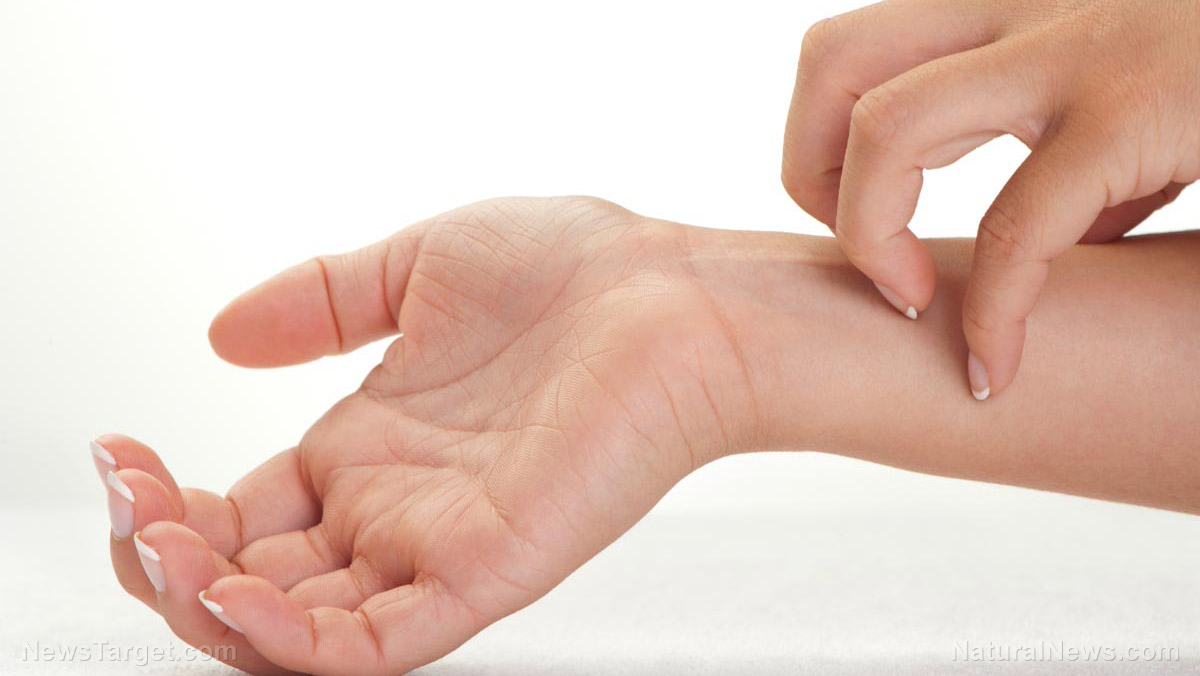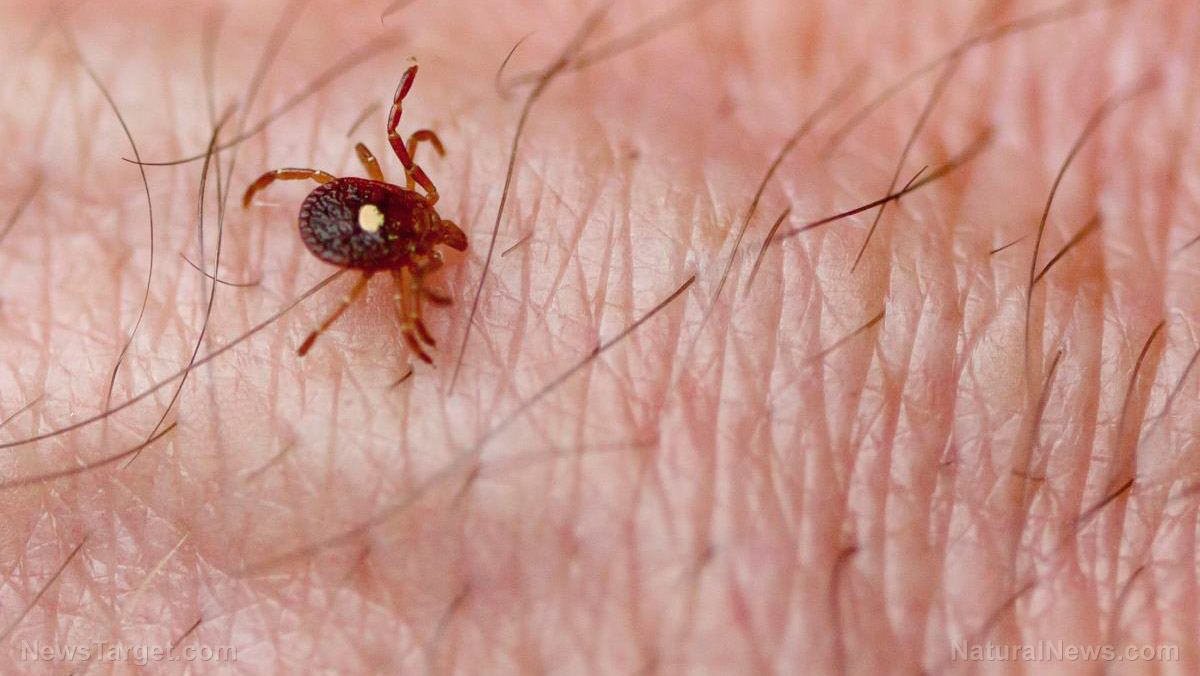Hidden health hazards: How to check for mold in your home
11/20/2024 / By HRS Editors

Mold in your home is more than just an unsightly nuisance. A bad mold infestation can cause health issues, so you better check for signs of mold in different rooms using a mold test kit.
Preventing a mold infestation from getting worse is key to keeping yourself and your whole family safe. (h/t to HGTV.com)
Should you worry about mold?
Mold is a fungus that grows indoors and outdoors and thrives on moisture. Mold sprouts from tiny spores that float in the air and settle on moist surfaces, where they then reproduce into mold colonies. There are thousands of types of mold, but most of them are harmless.
However, mold can become a problem if it affects areas of your home. Some molds are also toxic and may even cause health problems.
If you have a mold infestation, you might smell a damp, musty odor in certain rooms.
Mold is commonly found in bathrooms, kitchens and basements. If you notice a musty odor, check around your home for damp walls, carpet, flooring and other spaces that may be breeding grounds for mold.
Once you confirm that you have a mold infestation, treat it immediately before it worsens or causes permanent damage. (Related: DIY cleaning supplies: Using calcium hypochlorite as a bleach alternative.)
Signs of mold in your house
Mold can be black, white, spotted or almost any color. It can also look powdery, cottony or velvety.
If you notice a spot and aren’t sure if it’s an old stain or a bit of dirt, here’s how you can check if it is a sign of a mold problem:
- The spot has a musty, earthy smell.
- The spot is near a source of moisture, but not much light.
- There are signs of warping, cracking, or peeling of the material that it’s growing on.
- A drop of bleach lightens its color after one minute or two.
- Unchecked mold will eventually spread, but dirt and old stains won’t.
Symptoms of mold exposure
Some types of molds can harm your health by producing allergens or toxins.
Below are some of the common symptoms of mold exposure:
- Congestion
- Coughing
- Headache
- Irritation to the eyes, nose, throat and lungs
- Rashes
- Runny nose
- Skin rash
- Sneezing
- Wheezing
Mold may also trigger an asthma attack.
Testing your home for mold
One of the simplest methods to test for mold is watching out for weird smells. You can usually identify a mold problem by a strong, musty smell in damp environments.
Mold can also hide behind drywall, inside ductwork, under carpets, in between bathroom tiles and in other moisture-prone areas. Possible signs of moisture buildup can include bubbled paint, discoloration of finished surfaces, or uneven hardwood flooring.
To ease your worries, try using a home testing kit. Home testing kits may include typically petri dishes that you leave in an area where you suspect possible signs of a mold infestation.
The dish will collect spores within 24 to 48 hours and then grow the spores into mold, which will be evaluated by a lab or visually inspected.
While you can also hire a professional to locate a mold problem within your home, they can be very expensive. Since mold infestations can vary in size, the cost of a mold inspection can also vary.
If you hire an expert to examine your home, you might spend anywhere from $400 to $3,000. While some companies will offer free mold inspections, in most cases they offer their services free of charge because they are expecting you to employ them if mold is detected.
Tips for removing mold at home
Some mold is easy to clean and you can get rid of it by wiping down areas near the tub, especially if you catch it in the early stages of growth.
While companies offering mold removal services can be expensive, you might need to hire a professional if your drywall is covered in mold or if you are allergic to mold.
To eliminate a major mold infestation, you need to remove the mold and remedy the moisture problem that caused the excessive mold growth. Since mold thrives in moist areas, if the source of moisture is not corrected, cleaning won’t stop the mold infestation.
When cleaning mold on your own, always wear protective gear like gloves, goggles and N-95 respirator masks to reduce exposure to the mold. If there are outdoor openings in the room that you are cleaning, place an exhaust fan near them to help remove mold spores from the room.
If the moldy area is dry, lightly spray with water to reduce the incidence of airborne mold spores during cleaning.
For non-porous surfaces, such as cabinets, counters and vanities, wipe down with water and dish detergent to remove the mold. Use a stiff scrub brush for durable surfaces and switch to a cloth or sponge for more delicate surfaces.
Let the area dry completely. If the surface is more porous or absorbent, such as drywall or ceiling tiles, you can spray and scrub the surface with a 50/50 solution of white vinegar and three percent hydrogen peroxide.
You may need to cut out any infected areas if the mold is too stubborn.
When you’re done cleaning, place all used sponges, equipment and other materials in a heavy-duty garbage bag. If possible, remove the bag through a nearby exit instead of the main house to avoid distributing mold spores.
Where to buy a professional mold testing kit
The Health Ranger Store is committed to helping you keep your home safe and clean for your loved ones. That’s why we’re proud to introduce the GOT MOLD? Test Kit, a professional mold testing kit.
The GOT MOLD? Test Kit tests your air with spore traps, the most commonly used method of professional air sampling for mold. You can even say that using this kit allows you to test “like a pro.”
The Air-O-Cell® air sampling cassettes included in the GOT MOLD? Test Kit are also called spore traps. They act as filters, collecting spores and other microscopic particles pulled through them by the reusable BioVac™ Air Sampler.
Cassettes are analyzed by a microbiologist using direct microscopic investigation to count and classify the different spores in each sample. Spores are identified using up to 245 different categories — mostly genus level and higher — covering all known spore-producing molds and fungi, which includes at least 100,000 species.
You won’t need an expert to interpret the report. You’ll receive clear, concise results in an easy-to-understand format, along with the raw laboratory data, which could prove useful if the infestation professional needs more information. In that case, your inspector or home professional may have all the necessary information to proceed without having to repeat testing.
Regardless of the readings, if you or anyone else is experiencing symptoms that you believe are mold-related, seek medical advice.
Keep in mind that the GOT MOLD? Test Kit is not designed to be a replacement for a mold inspection performed by a qualified professional. Its purpose is to be a cost-effective first step.
And if there are Alert Conditions detected using this kit, and you intend to take action, look for a qualified mold assessment professional to perform a thorough physical inspection and provide a comprehensive written report with specific observations, detailed recommendations and, if necessary, a remediation plan.
Go to Homesteading.news for more tips on how to keep your homestead safe and clean for your whole family. You can also check out Health Ranger Store and Brighteon Store for more non-toxic cleaning supplies for your homesteading needs.
Watch the video below to learn more about an all-purpose non-toxic cleaner that you can use to keep your home clean without using harmful chemicals.
This video is from the Health Ranger Store channel on Brighteon.com.
More related stories:
Gardening tips: 12 Non-toxic ways to get rid of weeds in your driveway.
Home cleaning hacks: Non-toxic DIY carpet cleaner recipe.
Recipes for DIY cleaning products that can help you clean better and save money.
Mold, begone: 5 Non-toxic DIY mold cleaner recipes.
Sources include:
Submit a correction >>
Tagged Under:
children's health, cleaning, cleaning products, green living, healthy home, homesteading, how to, men's health, mold, mold test kits, off grid, preparedness, prepper, prepping, prepping supplies, remedies, self sufficiency, SHTF, survival, survival supplies, test kits, tips, women's health
This article may contain statements that reflect the opinion of the author
RECENT NEWS & ARTICLES
Allergies.news is a fact-based public education website published by Allergies News Features, LLC.
All content copyright © 2018 by Allergies News Features, LLC.
Contact Us with Tips or Corrections
All trademarks, registered trademarks and servicemarks mentioned on this site are the property of their respective owners.




















